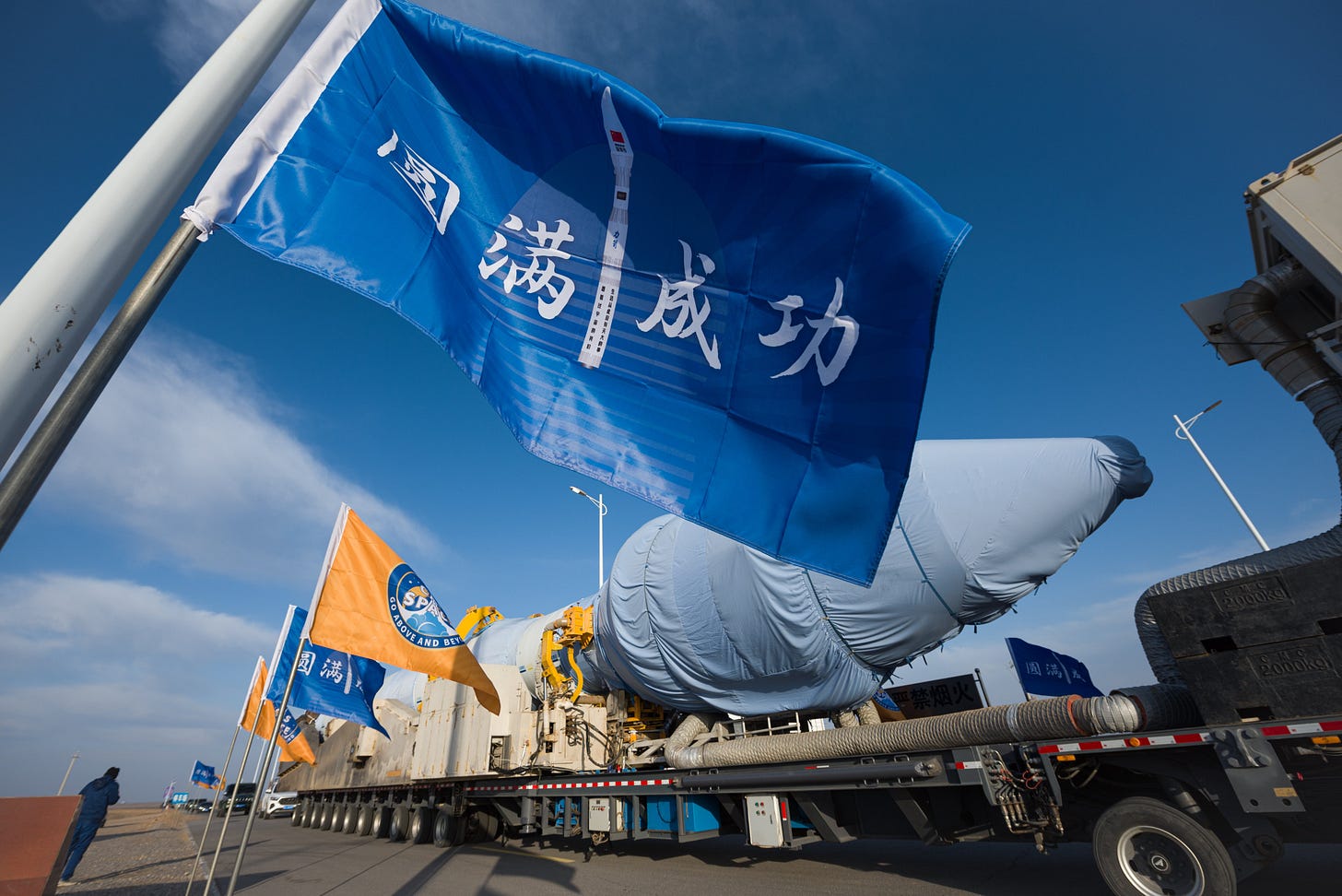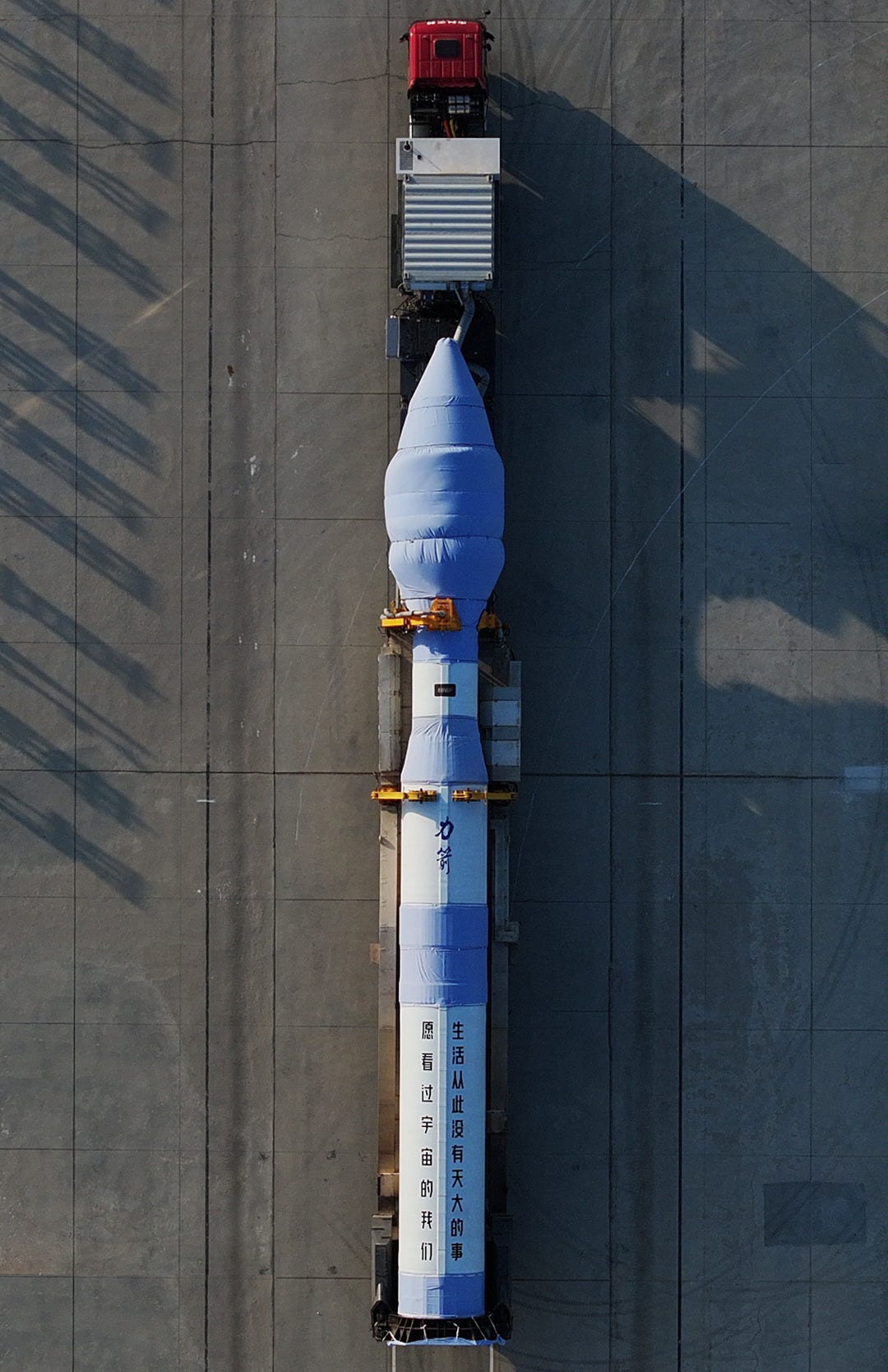Five steps forward, one step back [Kinetica-1 Y6]
CAS Space's Kinetica-1 rocket has suffered its first failure.
On December 27th, at 09:03 am China Standard Time, or 01:03 am Universal Coordinated Time, CAS Space launched its sixth Kinetica-1 launch vehicle from Launch Site 130 at the Jiuquan Satellite Launch Center. However a few minutes into flight the rocket suffered an anomaly.
This anomaly occurred approximately three seconds after the ignition of Kinetica-1’s third stage, with the prior two stages performing as planned. When the vehicle detected the anomaly, it triggered the autonomous safety control system, deliberately destroying the rocket. Before today’s anomaly, Kinetica-1 had flown five times, all without issue.
Following the failed flight, CAS Space took its WeChat/Weixin blog and Twitter (officially “X”) accounts to apologize to its customers, as eleven satellites were onboard inside a 3.35-meter diameter fairing. On WeChat the company said:
“We would like to express our sincerest apologies to friends from all walks of life who have been supporting and caring about CAS Space. We will always maintain awe of the aerospace industry, strictly follow the aerospace zeroing standards, complete fault investigations as soon as possible and announce them as soon as possible, and make every effort to ensure the success of subsequent flight test missions.”
If there are any problems with this translation please reach out and correct me.
With the company adding the following on Twitter:
“We are now going through the data and will begin the "归零(back to zero)" procedure immediately and zero in on the problem. We are sorry for failing our client this time, and as promised, we will make it up for you. The investigation is ongoing. We can confirm that the first two stages were nominal. Stage 3 lost attitude three seconds after ignition and the self-destructing mechanism was activated.”
As mentioned eleven satellites were atop of Kinetica-1 for the failed launch, so far only two have been linked to the launch. These were the French CASAA-Sat and AZSpace’s Dear-3 spacecraft. CASAA-Sat was designed by Laboratoire d’Astrophysique de Marseille (Marseille Astrophysics Laboratory) to map the South Atlantic Anomaly, where Earth's magnetic field is weak. Dear-3 was planned to be AZSpace’s first B300-L spacecraft to operate in space for a prolonged period of time, one year, while conducting various experiments for customers.
Despite today’s failure, CAS Space has had an impressive year launching Kinetica-1 four times. An increase in Kinetica-1’s cadence is expected in 2025, along with the debut of the partially reusable Kinetica-2. Speaking to CGTN, it was stated that there could be between eight to ten launches in 2025.
This was the 6th launch of Kinetica-1 and for CAS Space. It was also the 68th launch from China in 2024.
The article’s title is a play on words of the idiom one step forward, two steps back to give it a more positive spin.
Check out the previous launch from CAS Space
Going International? [Kinetica-1 Y5]
The fifth Kinetica-1 mission blasted off from Launch Site 130 at the Jiuquan Satellite Launch Center at 12:03 pm China Standard Time, or 04:03 am Universal Coordinated Time, on November 11th.
What is Kinetica-1?
This section is for those less familiar with China's various commercial launch vehicles.
Kinetica-1 is CAS Space's first launch vehicle and consists of four stages, all burning solid fuel. CAS Space offers the ability to launch a single satellite to utilize all of the rocket's payload capacity, however more 'rideshare' missions occur for multiple satellites to be delivered in one launch.
The payload capacity of the launch vehicle is currently as follows:
2,000 kilograms to low Earth orbit
1,500 kilograms to a 500-kilometer sun-synchronous orbit
The first-stage is powered by a solid rocket booster that burns an unspecified solid fuel, generating 200 tons of thrust. The second-stage is also powered by a solid rocket booster, producing 110 tons of thrust with the same unidentified propellant. The-third stage, also using the undisclosed propellant, generates 45 tons of thrust. Finally, the fourth-stage is powered by another solid rocket booster, providing 8 tons of thrust with the same solid propellant.
On its launch pad, Kinetica-1 stands at 30 meters tall. The first two stages have a diameter of 2.65 meters, the fairing has a diameter of either 2.65 or 3.35 meters. When prepared for launch Kinetica-1 weighs a believed 135,000 kilograms.
So far Kinetica-1 has flown all of its missions from CAS Space’s launch facility at the Jiuquan Satellite Launch Center.




![Going International? [Kinetica-1 Y5]](https://substackcdn.com/image/fetch/$s_!xpZb!,w_1300,h_650,c_fill,f_auto,q_auto:good,fl_progressive:steep,g_auto/https%3A%2F%2Fsubstack-post-media.s3.amazonaws.com%2Fpublic%2Fimages%2Ff51791b8-711c-483f-bfe7-a53da7c20c4c_5788x3377.jpeg)
